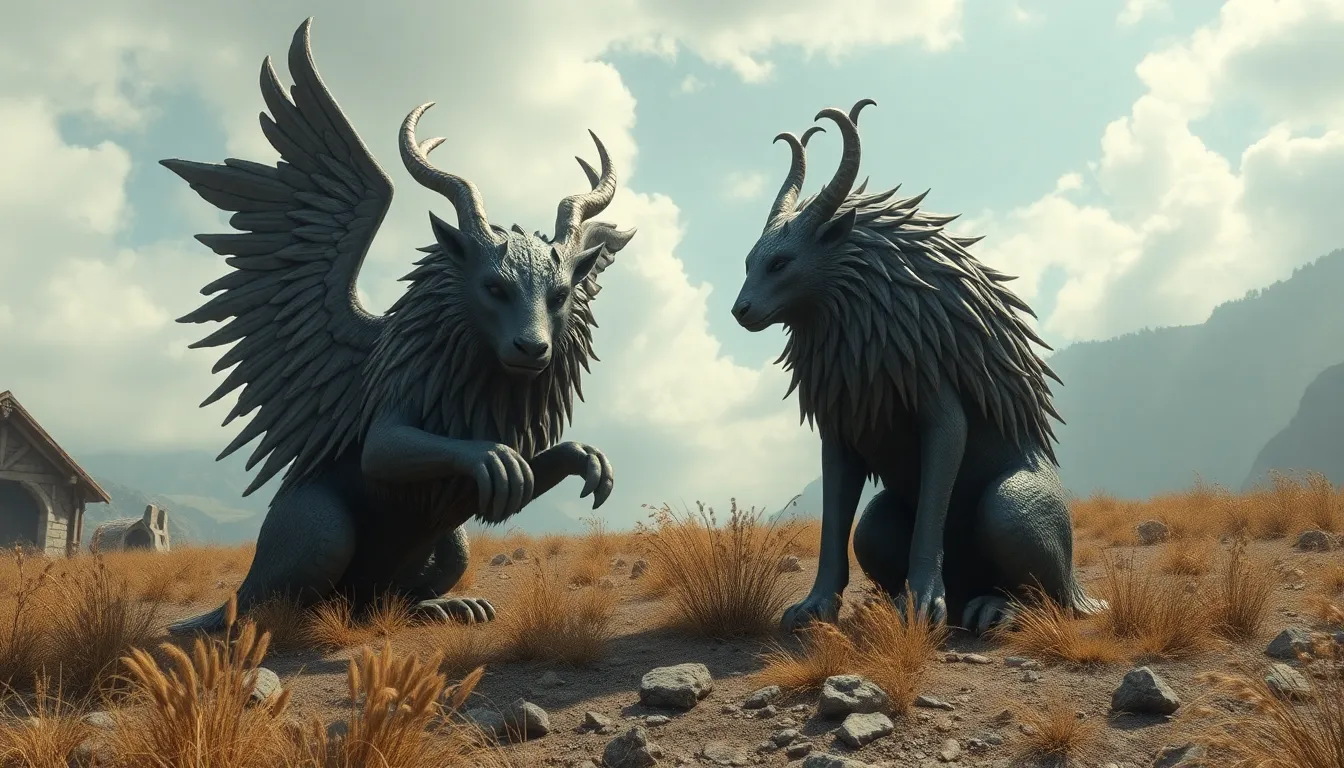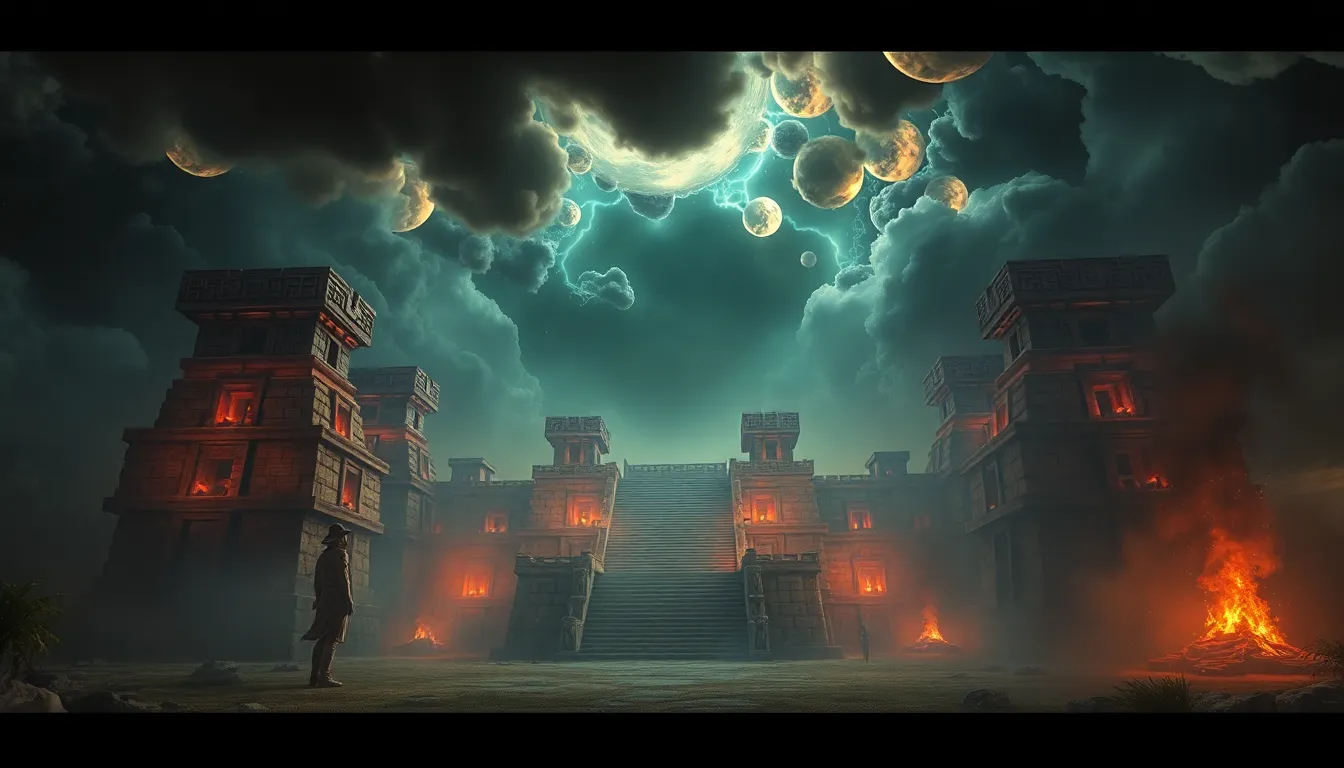Mythic Guardians: The Role of Sacred Animals in Protection
I. Introduction
Mythic guardians are often perceived as powerful entities that serve to protect individuals, communities, or sacred spaces. These guardians frequently take the form of sacred animals, revered across various cultures for their symbolic significance and protective qualities.
The importance of sacred animals transcends geographical boundaries, appearing in the mythologies, folklore, and religious practices of civilizations worldwide. Their roles as protectors, guides, and symbols of strength highlight the profound connection between humans and the animal kingdom.
This article aims to explore the multifaceted role of sacred animals as mythic guardians, examining their historical context, symbolism, and contemporary relevance. By delving into various cultures and traditions, we will uncover the enduring legacy of these creatures in the realm of protection.
II. Historical Context of Sacred Animals
A. Ancient Civilizations and Their Beliefs
1. Egypt: The Cat as a Protector
In ancient Egypt, cats were venerated for their grace and hunting prowess. The goddess Bastet, often depicted with a lioness or domestic cat head, symbolized home, fertility, and protection. Egyptians believed that cats warded off evil spirits, making them essential companions in households.
2. Mesopotamia: The Lion as a Symbol of Power
Lions held significant status in Mesopotamian cultures, representing strength and royal authority. The lion was often associated with deities, such as Inanna, and symbolized the protective nature of kingship. Statues of lions guarded entrances to temples and palaces, serving as physical and spiritual protectors.
B. Indigenous Cultures and Animal Spirits
1. Native American Traditions
Many Native American tribes view animals as spiritual guides and protectors. Each animal embodies specific traits that can aid individuals in their life journeys. For example, the bear symbolizes strength and courage, while the eagle represents vision and freedom.
2. Shamanism and Animal Totems
Shamanic traditions often incorporate animal totems, which are believed to provide protection and guidance. Shamans communicate with animal spirits to seek wisdom and healing, reinforcing the belief that these sacred animals serve as guardians in both physical and spiritual realms.
III. The Symbolism of Sacred Animals
A. Common Attributes of Mythic Guardians
Mythic guardians frequently share attributes that signify their protective roles, including:
- Strength: Symbolizing power and resilience.
- Wisdom: Offering guidance and insight.
- Instinct: Representing intuition and the ability to sense danger.
- Connection to the divine: Serving as a bridge between the spiritual and physical realms.
B. Cultural Variations in Animal Symbolism
While the attributes of mythic guardians may be consistent, their symbolism can vary greatly across cultures. For instance, the wolf may symbolize loyalty in one culture while representing fearlessness in another. This variation enriches the understanding of how different societies perceive and interact with the animal kingdom.
C. The Role of Mythology in Shaping Beliefs
Mythology plays a crucial role in shaping the beliefs surrounding sacred animals. Stories and legends often illustrate the protective qualities of these creatures, embedding them deeply in cultural consciousness. These narratives not only preserve the significance of sacred animals but also serve as moral and ethical guides for communities.
IV. Case Studies of Sacred Animals in Protection
A. The Role of the Elephant in Asian Cultures
In many Asian cultures, elephants are revered as symbols of wisdom, strength, and protection. They are often associated with the Hindu god Ganesha, who is believed to remove obstacles and bring good fortune. Elephants are commonly featured in rituals and festivals, symbolizing the protection of communities.
B. The Phoenix as a Symbol of Renewal and Protection
The phoenix, a mythical bird that rises from its ashes, symbolizes rebirth and protection from destruction. In various cultures, the phoenix represents the idea that out of adversity comes strength, serving as a powerful guardian against despair and hopelessness.
C. The Dragon in Eastern Mythologies
Dragons are revered in many Eastern cultures, particularly in Chinese mythology, where they symbolize power, strength, and good fortune. The dragon is often seen as a protector of the people, safeguarding them from harm and ensuring prosperity. Festivals featuring dragon dances celebrate this protective spirit.
V. Sacred Animals in Religion and Spirituality
A. The Significance of Animals in Religious Texts
Religious texts often highlight the significance of animals as sacred beings. For instance, in Christianity, the lamb symbolizes innocence and sacrifice, while in Hinduism, the cow is considered sacred and a symbol of motherhood and abundance.
B. Rituals and Practices Involving Sacred Animals
Many cultures incorporate rituals involving sacred animals as a means of seeking protection or blessings. These practices can include:
- Offerings to animal spirits.
- Animal blessings in religious ceremonies.
- Festivals celebrating animal deities.
C. The Concept of Animal Sacrifice and Its Protective Implications
Animal sacrifice has been a controversial practice in various cultures, often viewed as a means of appeasing deities or seeking protection. While some see it as a necessary tradition, others critique it for ethical reasons. Understanding the cultural context is essential in evaluating these practices.
VI. Modern Interpretations and Adaptations
A. The Influence of Sacred Animals in Contemporary Spiritual Practices
In modern spirituality, many individuals draw inspiration from sacred animals, incorporating their symbolism into personal practices. This can manifest in meditation, visualization, and the creation of altars that honor these creatures.
B. Reimagining Mythic Guardians in Popular Culture
Sacred animals often appear in popular culture, from literature to films. These portrayals can reshape public perceptions and introduce new generations to the significance of these mythic guardians. Iconic characters such as Aslan from “The Chronicles of Narnia” or the dragons in “Game of Thrones” exemplify this trend.
C. The Role of Animal Conservation in Modern Mythology
As awareness of environmental issues grows, the conservation of sacred animals has become a modern mythic narrative. Many organizations advocate for the protection of endangered species, emphasizing their cultural and ecological importance. This movement has redefined the role of sacred animals in contemporary society.
VII. Psychological and Emotional Aspects of Animal Guardianship
A. The Therapeutic Benefits of Animal Symbols
Animals often serve as symbols of comfort and protection in psychological practices. The presence of these symbols can evoke feelings of safety and security, aiding individuals in coping with stress or trauma.
B. Archetypes and Their Role in Personal Protection
Archetypes, including those of sacred animals, play a significant role in shaping individual identities. People may identify with specific animal archetypes, drawing strength and guidance from their characteristics in times of need.
C. The Connection Between Animals and Human Emotions
The bond between humans and animals is profound, often influencing emotional well-being. Interactions with animals can reduce anxiety and foster a sense of belonging, reinforcing their role as guardians in our lives.
VIII. Critiques and Controversies
A. Ethical Considerations Surrounding Sacred Animals
The reverence for sacred animals raises ethical questions regarding their treatment and conservation. Ensuring that these animals are respected and protected is crucial in maintaining their symbolic significance.
B. Cultural Appropriation and Misinterpretation
As sacred animal symbolism spreads globally, concerns arise about cultural appropriation and misinterpretation. It is essential to approach these symbols with respect and an understanding of their cultural origins.
C. The Impact of Modern Society on Traditional Beliefs
Modern society’s rapid changes can challenge traditional beliefs surrounding sacred animals. Balancing contemporary practices with respect for ancient traditions is vital in preserving their significance.
IX. The Future of Sacred Animals as Protectors
A. Reviving Ancient Traditions in a Modern Context
As interest in spirituality and ancient practices resurges, there is potential for reviving traditions related to sacred animals. This revival can foster a deeper understanding




